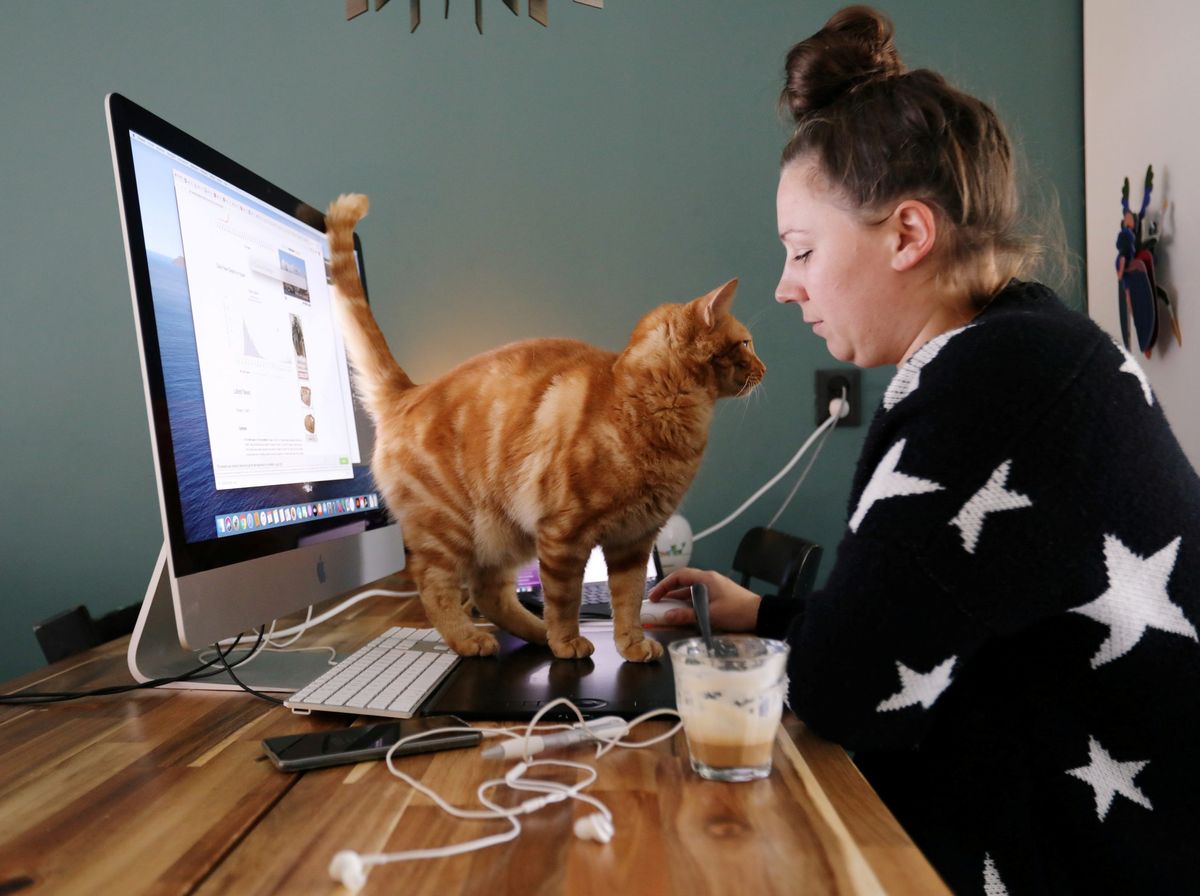This is what a return to the office will look like

A few minutes every morning is all you need.
Stay up to date on the world's Headlines and Human Stories. It's fun, it's factual, it's fluff-free.
Employers are already having a hard enough time recruiting workers amid the labor shortage. And, losing existing ones costs employers even more, meaning that they’re working hard to keep the staff they have.
What are the hurdles for getting people back in the office?
- According to a survey conducted by the Human Resources Professionals Association (HRPA), one of the biggest hurdles is employee well-being. This includes health and safety measures, such as hand sanitizer stations as well as encouraging vaccinations. It would also include mental health.
- A Deloitte study also showed that employers are uncertain of what to expect, with 32% worried about company culture and 26% concerned about whether a return to the workplace might affect staff performance.
- This isn’t just about productivity though – the percentage of Americans leaving their jobs reached its highest point since 2000.
- Employers are already having a hard enough time recruiting workers amid the labor shortage. And, losing existing ones costs employers even more, meaning that they’re working hard to keep the staff they have.
- Well-being isn’t the only hurdle. With the advent of remote working during the pandemic, a lot of people have moved from big cities to more rural areas, putting them further away from any sort of office they could go into regularly.
What will the return to office look like?
- A common type of return-to-work situation business leaders are beginning to embrace is a hybrid schedule.
- This is where employees only come into the office part-time to do things like group meetings, presentations or training sessions. The rest of the time these employees would work from home.
- A number of high-profile companies like Microsoft, Apple, Google and more recently, Uber have said that they’ll be implementing a hybrid work schedule.
- Data from a survey by staffing firm LaSalle Network found that more than three quarters of respondents will be using a hybrid model from 2022 onward.
- But, some are concerned that a hybrid model, or a model where some employees work entirely remotely while others work in person, could create penalties for those working remotely because remote employees don’t have the same social opportunities for growth that those working in person, effectively creating a sort of undervalued subgroup of workers.
- Dan Wang, a Columbia Business School associate professor of business and sociology, said that this problem would likely affect mothers the most. “Mothers tend to have it worse largely because of the hidden costs on their time,” said Wang. “And one thing that this shift to a hybrid work environment might do is exacerbate the very same disadvantages that mothers tend to experience, which has to do with their disconnectedness from the workplace due to demands on their time.”
What does that mean for companies?
- Speaking to TMS, Deidre Woollard, an editor for The Motley Fool’s real estate investing arm, said that more businesses are opting for short term leases and subleases rather than anything longer term.
- “This tells us that companies aren’t really certain what is going to happen,” she said. “Every investor I have talked to in recent months calls office real estate a wild card because of this.”
- Another real estate trend she pointed out was that, in order to deal with a workforce that’s moved away from big cities, companies have become more interested in smaller offices in suburban areas. “Many companies are planning to have smaller offices in more locations instead of one central campus.”
- The other thing for companies to keep in mind is the way offices are physically set up now, especially for employees who are only at the office part of the time.
- According to Blima Ehrentreu, the founder and chief executive officer of The Designers Group, hybrid schedules “means the offices now need to be set up to allow for multiple people using one desk or furniture that is easily movable.”
What next?
- As Woollard mentioned, it isn’t totally clear what strategies will work yet, and companies are experimenting with different models to figure out what works best for them.
- The reality though is that there probably won’t be any one single answer. Different companies tend to need different things depending on what they do; an IT company might be able to work remotely much better than, say, an insurance company.
- And, more generally, different individuals might want different situations as well. People who live alone, for example, might be much more willing to work from home because they won’t face distractions anyway.
- But as unsure as people might be about what exactly comes next, it’s clear that the landscape for remote work has shifted entirely during the pandemic.
- According to the HRPA data, 52.5% of workplaces didn’t offer remote work opportunities before the pandemic. Now, nearly two thirds are now planning to permanently have remote work options.
- But, one of the main trends to watch in the next few months is what main strategies employers across all industries adopt to try and retain their staff, especially in the midst of low re-employment rates.
Have a tip or story? Get in touch with our reporters at tips@themilsource.com




Comments ()